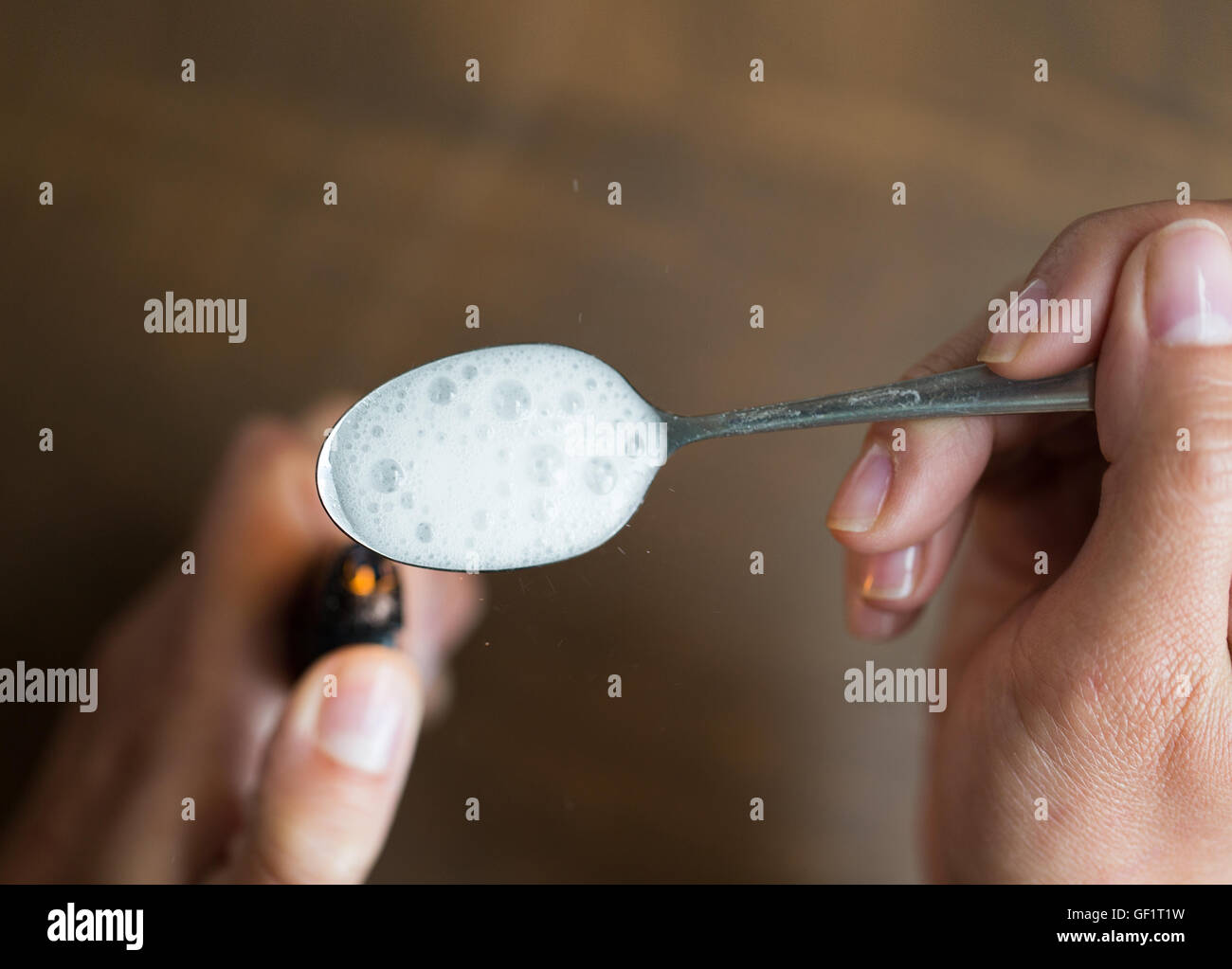


The language referring to paraphernalia and practices of smoking cocaine vary, as do the packaging methods in the street level sale. Powdered cocaine is also sometimes smoked, though heat destroys much of the chemical smokers often sprinkle it on cannabis. When smoked, cocaine is sometimes combined with other drugs, such as cannabis, often rolled into a joint or blunt. The effects, felt almost immediately after smoking, are very intense and do not last long – usually 2 to 10 minutes. Crack is smoked by placing it at the end of the pipe a flame held close to it produces vapor, which is then inhaled by the smoker. Crack smokers also sometimes smoke through a soda can with small holes on the side or bottom. A small piece of clean heavy copper or occasionally stainless steel scouring pad – often called a 'brillo' (actual Brillo Pads contain soap, and are not used) or 'chore' (named for Chore Boy brand copper scouring pads) – serves as a reduction base and flow modulator in which the 'rock' can be melted and boiled to vapor. These are sometimes called 'stems', 'horns', 'blasters' and 'straight shooters'. Smoking freebase or crack cocaine is most often accomplished using a pipe made from a small glass tube, often taken from 'love roses', small glass tubes with a paper rose that are promoted as romantic gifts. anhydroecgonine methyl ester when co-administered with cocaine increases the dopamine in CPu and NAc brain regions, and has M 1- and M 3- receptor affinity. Pyrolysis products of cocaine that occur only when heated/smoked have been shown to change the effect profile, i.e. In a 2000 Brookhaven National Laboratory medical department study, based on self reports of 32 abusers who participated in the study,'peak high' was found at mean of 1.4min +/- 0.5 minutes. Cocaine is smoked by inhaling the vapor produced when solid cocaine is heated to the point that it sublimates. The two main ways cocaine is smoked are freebasing and by using cocaine which has been converted to smokable 'crack cocaine'. In contrast, inhalation of cocaine leads to the shortest duration of its effects (5–15 minutes). The onset of cocaine's desired euphoric effects is fastest with inhaling cocaine and begins after 3–5 seconds. Inhalation by smoking cocaine is one of the several ways the drug is consumed. Additionally, because cocaine is a vasoconstrictor, and usage often entails multiple injections within several hours or less, subsequent injections are progressively more difficult to administer, which in turn may lead to more injection attempts and more consequences from improperly performed injection. As with all injected illicit substances, there is a risk of the user contracting blood-borne infections if sterile injecting equipment is not available or used. Aside from the toxic effects of cocaine, there is also danger of circulatory emboli from the insoluble substances that may be used to cut the drug. In a study of cocaine users, the average time taken to reach peak subjective effects was 3.1 minutes. This is colloquially referred to as a 'bell ringer'. Subjective effects not commonly shared with other methods of administration include a ringing in the ears moments after injection (usually when in excess of 120 milligrams) lasting two to 5 minutes including tinnitus and audio distortion. Recreationalĭrug injection by turning the drug into a solution provides the highest blood levels of drug in the shortest amount of time. An alternative method of administration for ENT surgery is mixed with adrenaline and sodium bicarbonate, as Moffett's solution. Even when used this way, some of the used cocaine may be absorbed through oral or nasal mucosa and give systemic effects. In this scenario dissolved cocaine is soaked into a ball of cotton wool, which is placed in the nostril for the 10–15 minutes immediately before the procedure, thus performing the dual role of both numbing the area to be cauterized, and vasoconstriction.

Some ENT specialists occasionally use cocaine within the practice when performing procedures such as nasal cauterization. If vasoconstriction is desired for a procedure (as it reduces bleeding), the anesthetic is combined with a vasoconstrictor such as phenylephrine or epinephrine. Medicinal use of cocaine has decreased as other synthetic local anesthetics such as benzocaine, proparacaine, lidocaine, and tetracaine are now used more often. The major disadvantages of this use are cocaine's potential for cardiovascular toxicity, glaucoma, and pupil dilation. Cocaine is now predominantly used for nasal and lacrimal duct surgery.


 0 kommentar(er)
0 kommentar(er)
